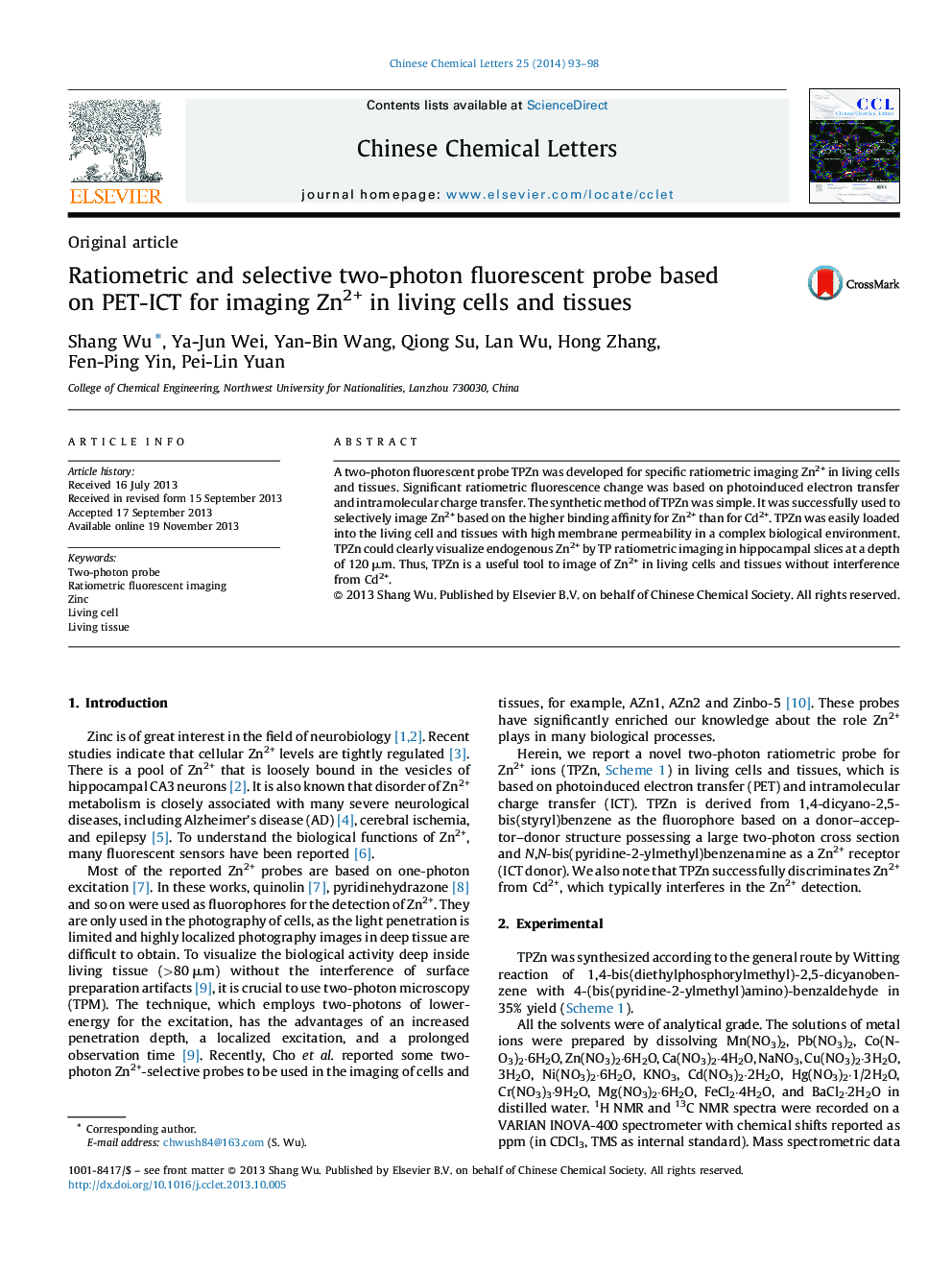| Article ID | Journal | Published Year | Pages | File Type |
|---|---|---|---|---|
| 1254978 | Chinese Chemical Letters | 2014 | 6 Pages |
A two-photon fluorescent probe TPZn was developed for specific ratiometric imaging Zn2+ in living cells and tissues. Significant ratiometric fluorescence change was based on photoinduced electron transfer and intramolecular charge transfer. The synthetic method of TPZn was simple. It was successfully used to selectively image Zn2+ based on the higher binding affinity for Zn2+ than for Cd2+. TPZn was easily loaded into the living cell and tissues with high membrane permeability in a complex biological environment. TPZn could clearly visualize endogenous Zn2+ by TP ratiometric imaging in hippocampal slices at a depth of 120 μm. Thus, TPZn is a useful tool to image of Zn2+ in living cells and tissues without interference from Cd2+.
Graphical abstractThe efficient two-photon ratiometric fluorescent probe TPZn exhibits clear Zn2+-induced change in the intensity ratio in live cells without interference from proton and sensor photoactivation.Figure optionsDownload full-size imageDownload as PowerPoint slide
